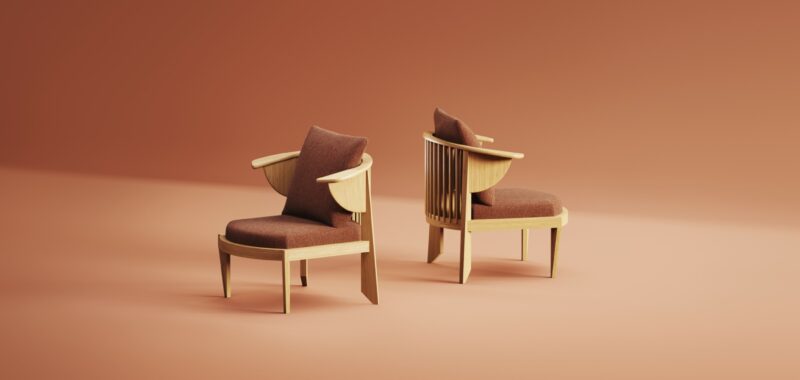The late American architect Frank Lloyd Wright is unequivocally acknowledged by posterity as a pioneer of not only architecture but design as a lifestyle, pivotal in shifting the public’s accessibility to a new paradigm, vocabulary, and vision for modern living – a mission upheld to this day by the Frank Lloyd Wright Foundation (FLWF). Aligning with this egalitarian ethos is the multi-hyphenate Steelcase, a global thought leader, designer, and manufacturer of innovative furnishings and solutions for the world of work. The two parties come together once again to release the Rockford and Galesburg Collections marking an expansion of their longtime collaboration. Together, they reintroduce iconic mid-century furniture while reinterpreting Usonian concepts for timeless pieces tempered by current tastes and needs.
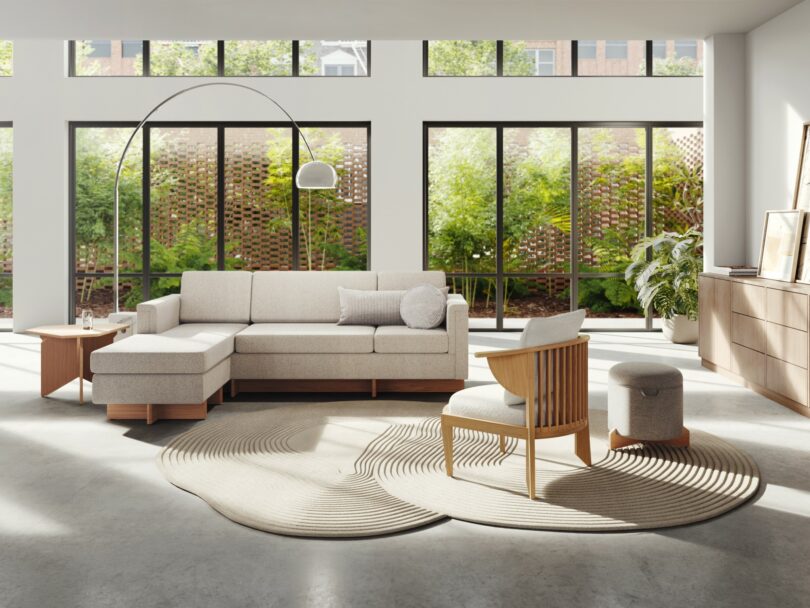
Rockford Occasional Table, Galesburg Sectional, Rockford Lounge Chair, and Rockford Ottoman
Make no mistake – the furniture comprising the Rockford and Galesburg collections are not reproductions, but rather thoughtful additions to a growing catalog that reflect organic architecture as defined by the visionary. “We wanted to pick up Wright’s plans for democratizing great design, and that meant that it had to be more affordable. We also wanted to pick up the imprimatur placed in his will to perpetuate organic design by educating future architects and designers,” says Stuart Graff, president and CEO of the Frank Lloyd Wright Foundation. “And you don’t do that by instructing them to reproduce the past, right? All you’re doing is, in a sense, embalming Wright’s designs, and we wanted to do more than that.”
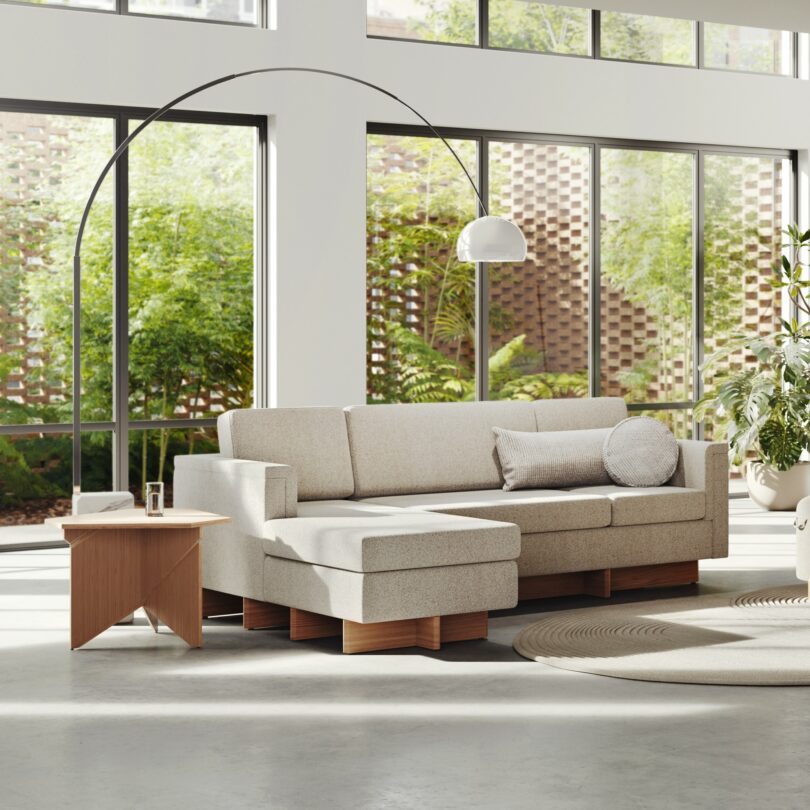
Rockford Occasional Table and Galesburg Sectional
Humanism, materiality, novel construction techniques, and an articulation of joinery are but a smattering of tenets from which the design team is inspired when referencing the FLWF archives. This philosophy-forward approach yields a high return on investment aesthetically and structurally for products with incredible longevity.
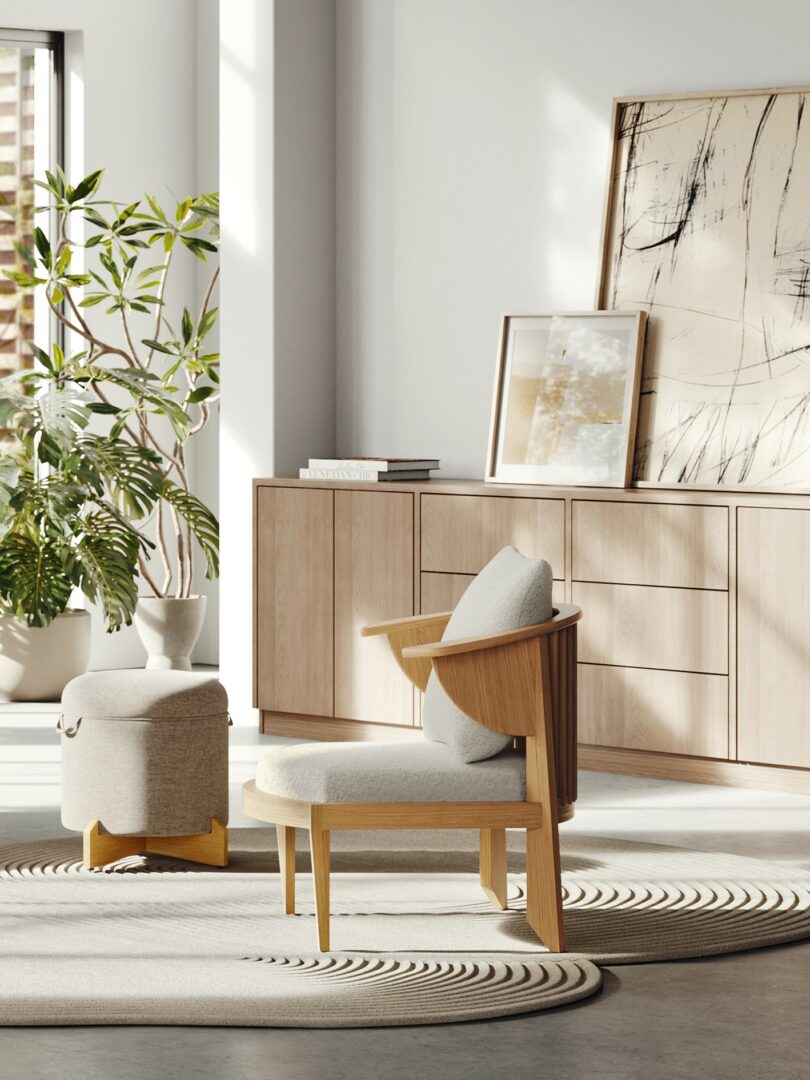
Rockford Ottoman and Rockford Lounge Chair
The Rockford Collection, inspired by the 1952 Laurent house in Rockford, Illinois, includes the reintroduction of a rail-back lounge chair and grouping of polygonal plywood tables and their movable companion seating. With accessibility at its core, each geometric piece may be accessed – visually and physically – from any angle to meet the needs of wheelchair users allowing for freedom and comfort. And the upholstered stools feature fabric pulls for ease of use. The angularity built in throughout this series not only creates motion through leading lines that look upward, the tilted armrests on the chair help users create momentum as they transition to a standing position from being seated. What’s more, plywood is dignified as a material through artful construction that celebrates the grain.
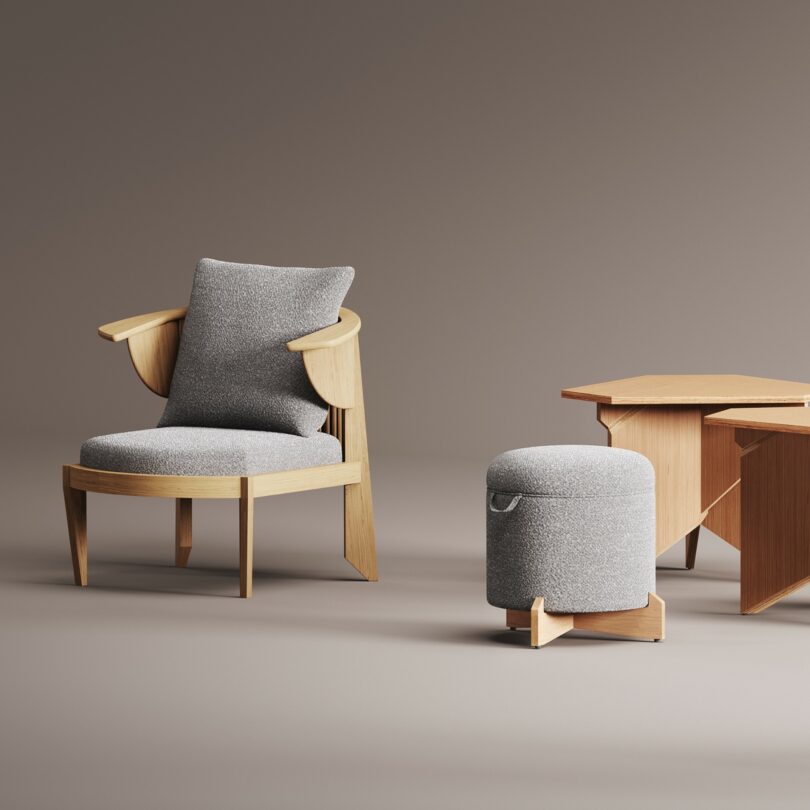
Rockford Lounge Chair, Rockford Ottoman, and Rockford Occasional Tables
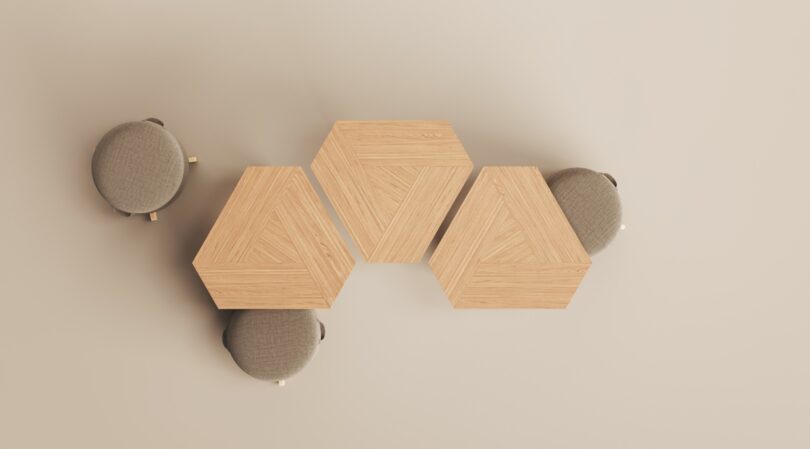
Rockford Ottomans and Rockford Occasional Tables
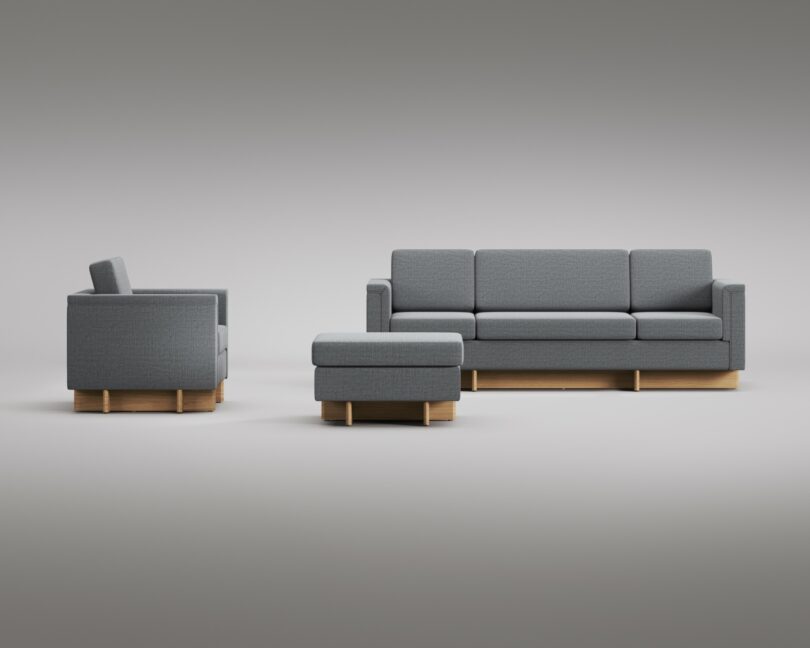
Galesburg Lounge Chair, Galesburg Ottoman, and Galesburg Sofa
In contrast is the Galesburg Collection, a plush, textured line of built-in banquette-inspired seating originally found in Usonian homes from the Wright-designed Parkwyn Village and The Acres communities within Galesburg, Michigan. Users can appreciate the tuxedo-style sofa, sectional, lounge chair, and ottoman from all angles. Dimensionality and linework are fully realized with every facet and with the turn of every upholstered corner for a luxurious, tailored feel.
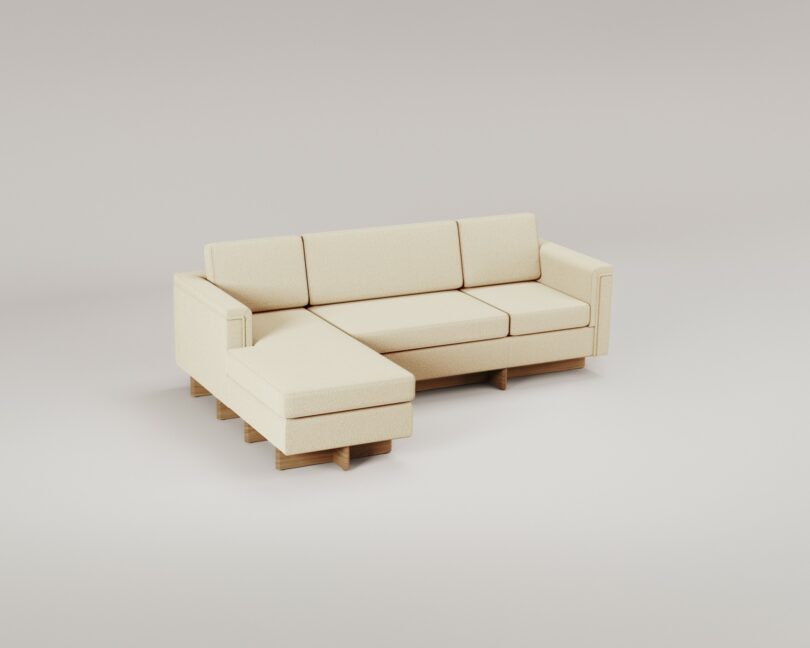
Galesburg Sectional
Steelcase has remained a regular steward of Wright’s craft since 1939 when they produced the original furnishings for his revolutionary SDS Johnson Administration Building in Racine, Wisconsin, which inspired a contemporized collection by the brand not long ago. The partnership has continued since 1985 ever looking forward with the optimism inherent in his practice. And national audiences have grown more appreciative of Wright’s contributions with some 72% of households familiar with his person – and in some cases the only architect they can name. For context, “starchitects” like Frank Gehry and Zaha Hadid come in at a modest 19%.
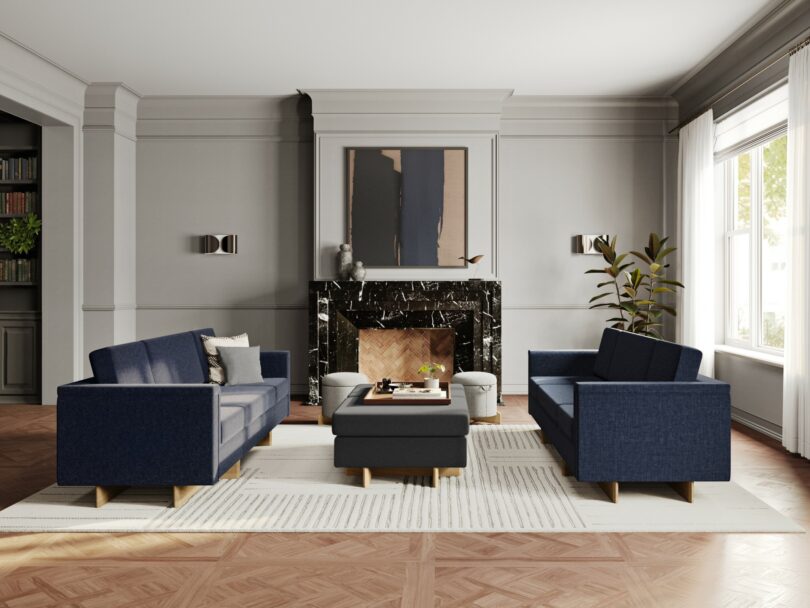
Galesburg Sofas, Galesburg Ottoman, and Rockford Ottomans
It’s an awesome privilege, nay duty, for the designers at Steelcase to participate in a shared vision as they contribute to a substantial legacy. “It’s a bit of a heady to be asked to work on projects that have the name Frank Floyd Wright associated with them,” says Meghan Dean, general manager of ancillary merchandising and partnerships at Steelcase. “But the foundation is incredibly supportive. We have a kind of trust and collaboration that allows the team to feel supported in pursuing these ideas that, at first blush, feel like a little bit of a kind of weighted responsibility.”
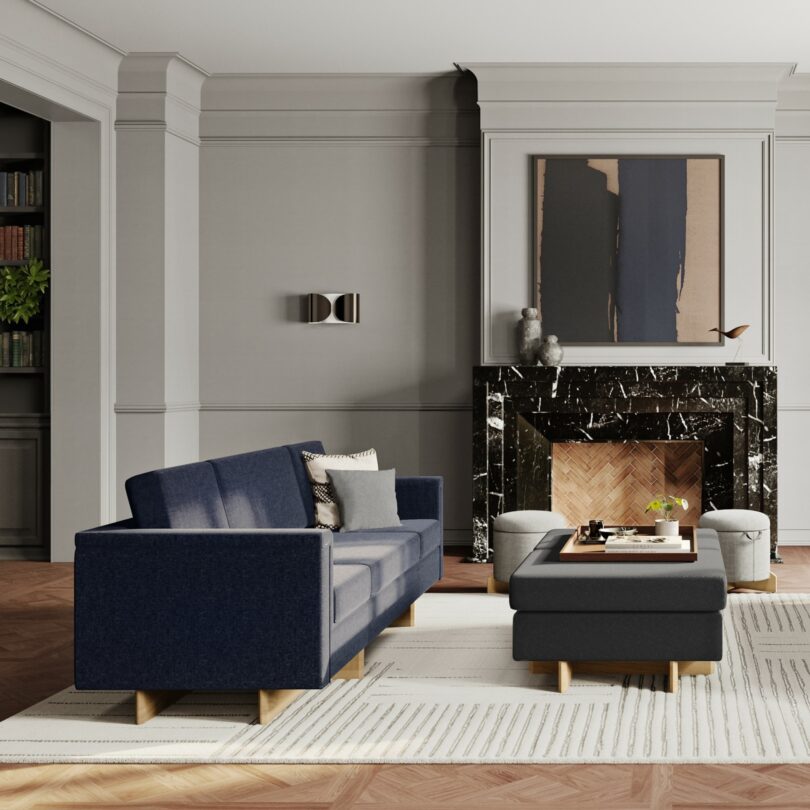
Galesburg Sofa, Galesburg Ottoman, and Rockform Ottomans

Galesburg Ottomans and Galesburg Sofa
To learn more about the partnership between Steelcase and the Frank Lloyd Wright Foundation, or to shop the collections, visit steelcase.com.
Photography provided by Steelcase.

